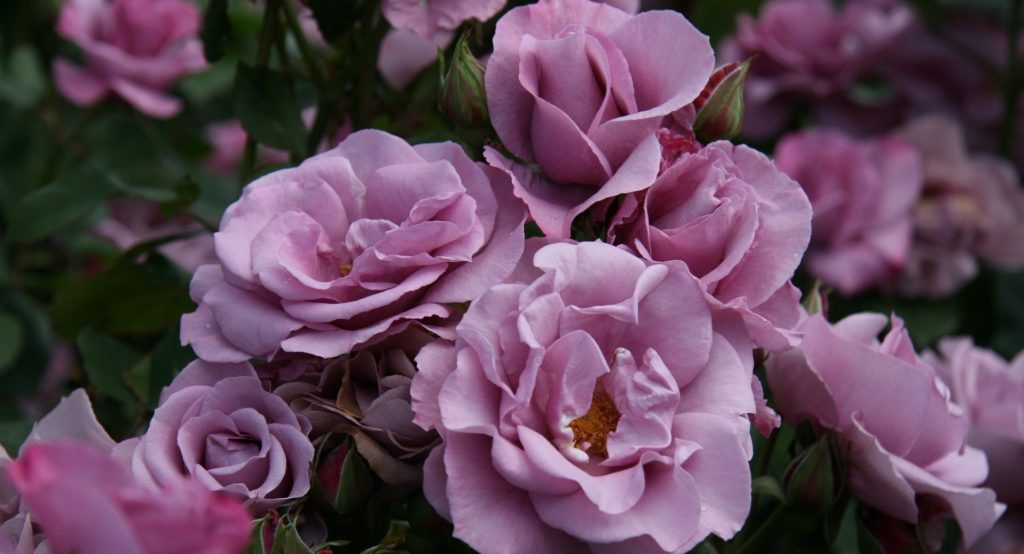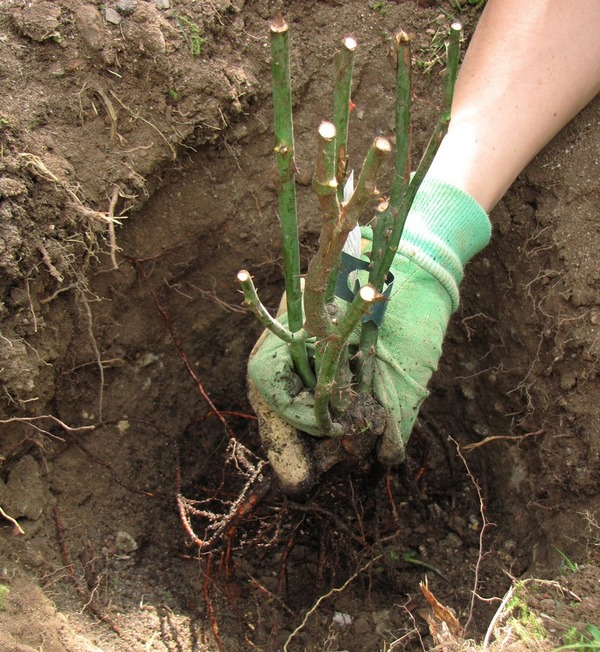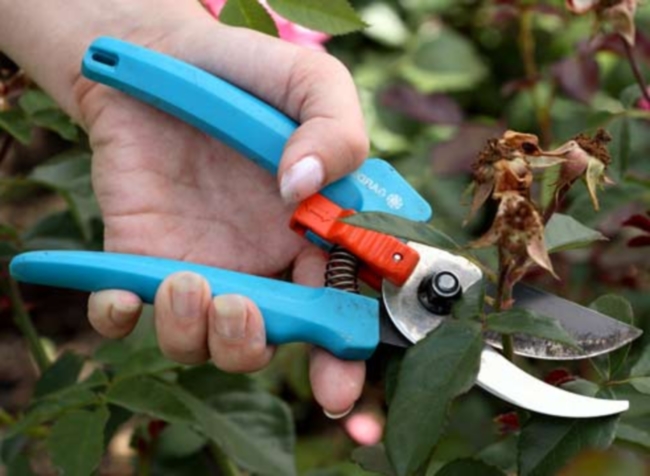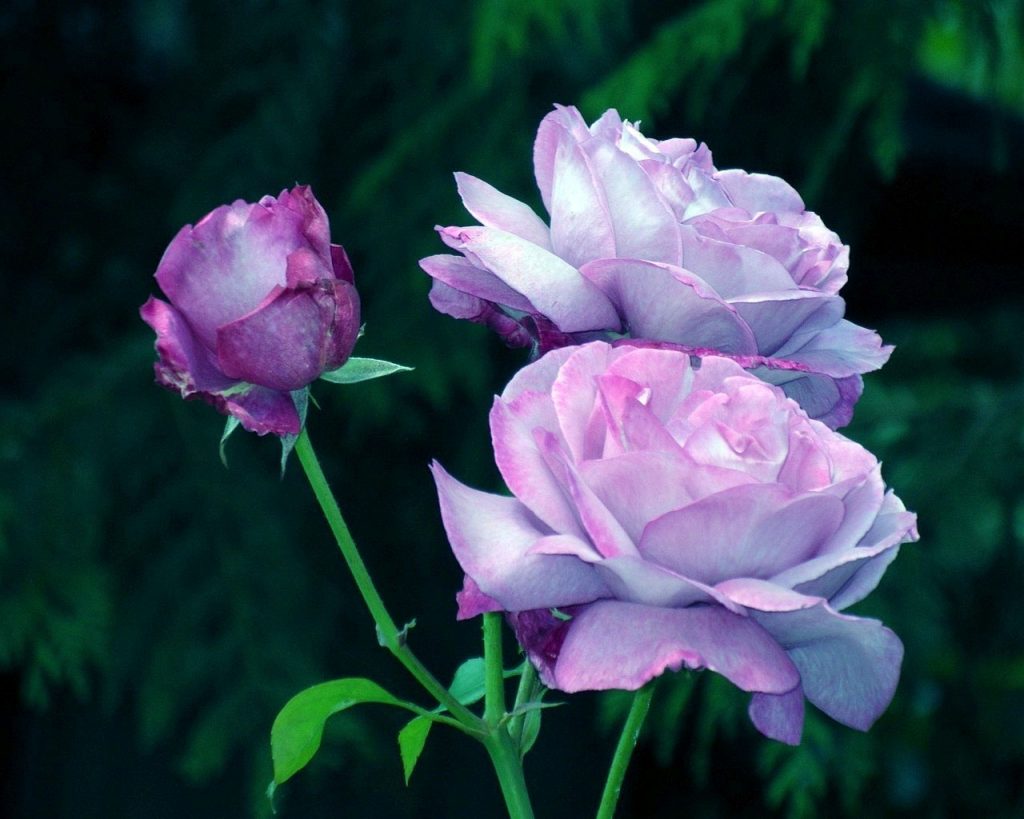Purple roses: the best varieties, their cultivation
Content
Description of the best varieties
Blue, purple and their shades are not natural rose flowers. All exotic forms of this color palette were artificially bred by breeders, and it is believed that such an interesting coloration can be achieved by the implantation of the “pansies” gene, which, in varying amounts, gives roses a lilac or intense purple color.
Many rose growers worked on breeding a purple-blue rose, and today the number of varieties of these unusual flowers is already in the tens:
- Rhapsody in Blue (2002) One of the most extraordinary varieties of roses, as close to blue as possible. This is a 1.5m high scrub, ideal for both flower beds and single planting. In the bud stage, the rose is blue-violet, almost inky in color, over time, the petals fade and become light purple. The flowers are medium-sized, semi-double, collected in small clusters. The variety is resistant to cold and diseases, tolerates long-term rainfall well.
- Cardinal de Richelieu. The oldest and most unique in its color variety among the French (Gallic) roses. The flowers are very large, densely double, dark purple in color with a white center, single or collected in inflorescences of 3 pieces. The bush is high (up to 2 m), shoots without thorns, blooms once, but for a long time. The aroma is unusual: light, with hints of pepper.
- Blue for You (2006). An unusual color English rose belonging to the Floribunda group. The flowers are medium, semi-double, pale lilac, slightly bluish, located 3-5 buds on the stem. The bush is low (up to 1 m), the foliage is dense. The resistance of the variety to disease and cold is average.
- Migdnight Blue (2004). Scrub American selection with really purple, almost ink-colored buds with a yellow center. The bush is low (up to 80 cm), compact. Semi-double flowers, velvety petals, pronounced aroma, clove. The resistance of the variety to the effects of precipitation is average.
- Novalis (2010). Amazing lilac roses bred by the famous company Cordes. This is Floribunda, blooming in waves throughout the summer. The flowers are large, double, even rounded. The bush is low (up to 80 cm), erect shoots. Resistance of buds to precipitation is low.
- Purple Eden (2001). Floribunda of American selection with incredibly deep purple color of flowers. At the bud stage, the rose is dark purple with a light smoky dusting, as it blooms, it acquires a dark plum color. The flowers are large, densely double, velvety. The bush reaches its bloom in 4-5 years.
Video "Description"
From the video you will learn what purple roses are.
Features of site selection
All roses love sunny and slightly windy areas. In a well-lit place, the bush grows more intensively, and the buds form and open faster.However, it should be borne in mind that in the bright sun, saturated purple petals can fade, due to which the buds will lose their initial attractiveness.
Therefore, it is better to plant dark purple roses in a place where the sun shines in the morning, and in the afternoon the bush is in partial shade.
When planting purple roses on the site, you should immediately think about how the plants will be located and with what flowers in the garden they will be combined. The main condition for lush flowering is the presence of the sun, so planting roses in the shade of trees is at least impractical.
In terms of soil, roses prefer light loam with a fertile top layer, as well as neutral acidity. Stagnant water is harmful for roses. The ideal planting site would be a small elevation, slope, or the front of the house, where a wall will protect the bush from the wind.
Care advice
Caring for roses includes a list of necessary measures and procedures, which may have their own characteristics depending on the variety or belonging to a particular group of roses.
As a rule, such features relate to seedlings of the first year of life, and in the future, all care measures are standard:
- you need to water the bushes regularly, but in moderation, avoiding waterlogging, and preventing the soil from drying out;
- from time to time it is necessary to loosen the soil - this procedure improves oxygen access to the roots;
- once every 2 weeks, mineral fertilizing is applied, contributing to abundant flowering;
- you should regularly inspect the bushes for damage by pests or diseases, since it is easier to fix the problem at the initial stage;
- faded buds need to be removed in time - this will not only improve the appearance of the bush, but also reduce the risk of spreading fungal diseases and pests, it is no secret that a dried bud is an excellent place for insects to live;
- in the fall, after all the buds have faded, the bushes are cut off, spudded, and the roots are covered with a layer of organic mulch (in a harsh climate, shoots also need shelter);
- in the spring, the bushes are freed from shelter, treated with insecticides (Bordeaux liquid, copper sulfate), if necessary, they carry out sanitary pruning.

When caring for purple roses, remember that these are artificially bred hybrids, so before you do anything, first familiarize yourself with the peculiarities of growing this variety.
Combination with other plants
Roses of intense purple look very unusual, but using them in a landscape space is not so simple. A large shrub with large double flowers can look spectacular in the front of a yard or garden, but for this it must grow alone. In a group planting, dark purple looks gloomy, so it is better to dilute it with contrasting or white and pink tones. For example, many people like the combination of purple with yellow and orange. It's bright, festive, but not for everybody. For those who prefer the classics, dark purple is best combined with white, pale pink or light lilac.
As for lilac roses, they look more elegant, as their shades are lighter. They go well with both dark and light colors, and can also be planted separately.
The lilac color perfectly sets off bright green, light yellow and lemon. In a group planting on a flower bed, purple-lilac roses are best combined with roses. If there are several types of flowers in the flower garden, then purple flowers can be planted in the center of the composition, and supplemented with undersized flowers of light shades. In the bouquet, purple roses are successfully set off by small white flowers and bright emerald greens.
Video "Leaving"
From the video you will learn how to properly care for roses.



